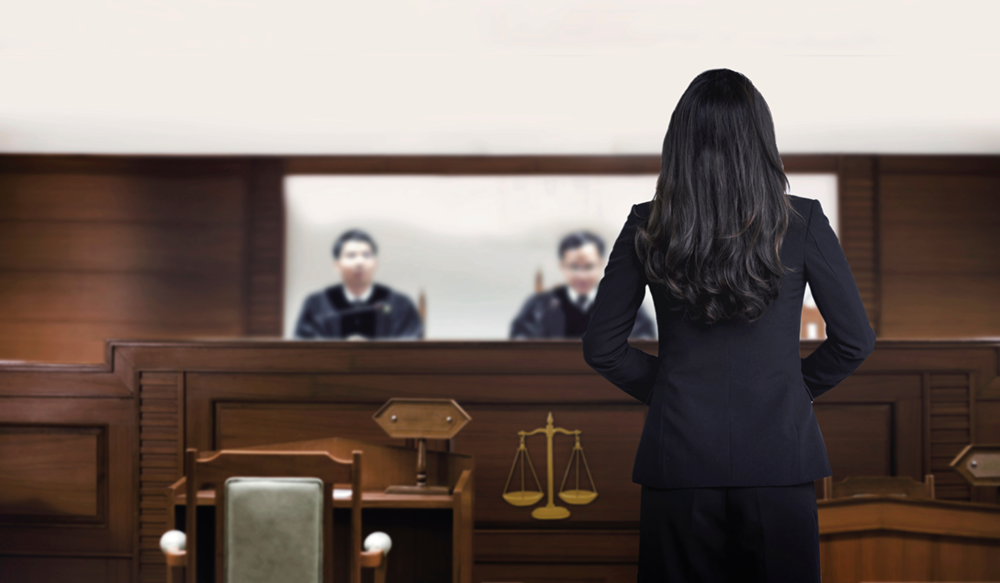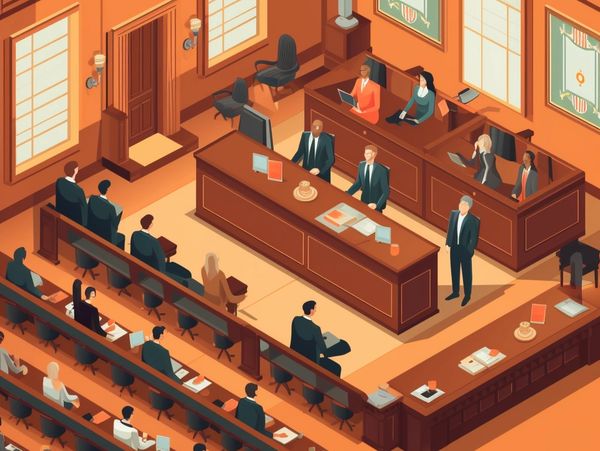Navigating the Intricacies of Test Presentations: Tips for Seamless Distribution and Engaging Disagreements
In the realm of legal procedures, the art of test presentation stands as a crucial component of success. As lawyers navigate the intricate web of court characteristics, the capacity to perfectly deliver debates and proof while captivating the court's attention comes to be vital. The intricacies intrinsic in trial presentations call for a delicate equilibrium of finesse, ability, and approach. By refining strategies that guarantee a sleek delivery and crafting compelling debates that resonate with the audience, lawful professionals can substantially boost their advocacy. In a world where persuasion preponderates, understanding the complexities of test discussions is not just an option however a need for those looking for to prevail in the courtroom.

Understanding Trial Purposes
To effectively browse a trial, it is vital to have a clear understanding of the purposes that need to be achieved. Prior to stepping into the court, lawful groups need to define their goals and preferred end results. These purposes work as directing principles throughout the trial, forming approaches and affecting decision-making procedures.
Understanding trial purposes involves an extensive analysis of the situation, legal precedents, and the customer's finest rate of interests. Trial Presentations. It calls for a thorough exam of the facts, recognizing key problems, and expecting prospective challenges. By setting particular and measurable goals, lawyers can customize their presentations and arguments to align with the desired outcomes
In addition, a clear grip of test goals allows legal groups to focus on evidence, witnesses, and lawful disagreements successfully. It enables for the development of a coherent story that reverberates with the judge and jury, reinforcing the general situation presentation.

Organizing Evidence Successfully
Having a clear understanding of trial objectives lays the structure for organizing proof properly in legal proceedings. By lining up the presentation of evidence with the preferred outcomes of the test, legal groups can enhance their arguments and boost their persuasiveness.
Another crucial element in organizing proof effectively is developing a rational circulation. Providing proof in a sequential and systematic manner can aid develop an engaging narrative that sustains the legal disagreements being made. Additionally, utilizing visual aids such as charts, timelines, or charts can better enhance the company of proof and assist in making clear complex connections or series of events.
Moreover, ensuring that all evidence provided is permissible and appropriate to the instance is important. Unnecessary or inadmissible evidence can interfere with the toughness of the debate and potentially hurt the reputation of the offering celebration. A careful evaluation and option procedure need to be taken on to consist of just the most legally sound and impactful evidence in the trial discussion.
Crafting Influential Stories
Crafting engaging stories plays a pivotal duty in providing persuasive disagreements during lawful proceedings. When creating a story for a trial discussion, it is vital to establish a clear story that highlights essential factors and links them in a coherent way. By weaving together proof, testimony, and legal debates into a influential and cohesive story, legal specialists can efficiently support for their clients and raise the possibility of a desirable result in the courtroom.
Grasping Aesthetic Aids
Efficient use visual help is key to improving the influence and clarity of test discussions. Visual aids, when made use of strategically, have the power to simplify intricate information, strengthen vital points, and leave a long lasting impact on the discretionary. To grasp aesthetic help in trial presentations, it is critical to ensure that they are clear, concise, and pertinent to the debates being made.
When incorporating visual aids, such as graphes, timelines, graphs, or photos, right into a trial presentation, it is vital to maintain them aesthetically appealing review yet specialist. The visuals need to complement the verbal arguments, offering a graph of the info being gone over without frustrating the target market with unneeded information.
In addition, experimenting the aesthetic help in advance is essential to guarantee a seamless delivery during the trial. Acquainting oneself with the material, shifts, and timings of each visual help can assist preserve the flow of the presentation and avoid technical glitches that might emerge.
Supplying Impactful Closing Disagreements
An engaging closing disagreement functions as the culmination of a test discussion, encapsulating the core narrative and encouraging the discretionary towards a favorable choice. To supply an impactful closing disagreement, it is important to succinctly wrap up key factors, highlight the staminas of your situation, and address any kind of weaknesses in a tactical manner. Begin by outlining the major disagreements that support your customer's setting, emphasizing why the proof provided throughout the test sustains your narrative. It is crucial to develop a sense of communication and clearness, guiding the discretionary in the direction of the preferred conclusion.
Furthermore, including emotional charm can additionally reinforce your closing argument. By linking and humanizing the instance on a personal degree with the decision-makers, you can stimulate empathy and understanding, affecting their assumption of the facts provided. In addition, restating the lawful criteria that must be fulfilled for a favorable ruling can strengthen the legitimacy of your position. Eventually, a well-crafted closing debate need to leave a long lasting perception, engaging the court and jury to rule in your client's support.
Conclusion
Finally, mastering trial go to these guys presentations involves comprehending goals, organizing evidence, crafting narratives, using visual aids, and providing impactful closing disagreements. By carrying out these methods successfully, legal representatives can provide their situation effortlessly and make compelling debates in the courtroom. It is essential to navigate the intricacies of test discussions with accuracy and ability to attain success in legal process.
By aligning the discussion of proof with the preferred end results of the trial, lawful teams can strengthen their debates and enhance their persuasiveness (Trial Presentations). To master visual aids in trial discussions, it is vital to make certain that they are clear, concise, and appropriate to the arguments being made
An engaging closing debate offers as the end result of a test discussion, encapsulating the core narrative and Going Here persuading the judge and court in the direction of a beneficial choice. Begin by outlining the major debates that support your customer's placement, stressing why the proof presented throughout the test supports your narrative.In verdict, grasping test presentations entails recognizing goals, organizing proof, crafting narratives, making use of aesthetic help, and providing impactful closing arguments.